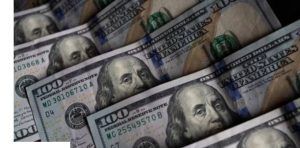The Impending Catastrophe: A US Debt Default and Its Global Ripple Effect
In the wake of two major global shocks – the COVID-19 pandemic and a significant European war – the world now faces the looming specter of a US debt crisis. While negotiations to increase the US government’s borrowing capacity were underway, the possibility of the American government being unable to meet its financial obligations has sent shockwaves through financial markets. The repercussions of a potential default are predicted to be far more devastating than the 2008 global financial crisis, posing a threat to the stability of the global economy.

The Fragile Global Financial System:
The smooth functioning of the global financial system relies heavily on the belief that the US government will honor its commitments to creditors. This trust has made the US dollar the world’s reserve currency and US Treasury securities the foundation of bond markets worldwide. However, if the US government’s credibility in repaying its debts comes into question, it could wreak havoc across various global markets. The 2011 standoff over raising the US debt ceiling serves as a stark reminder, with the S&P 500 index plunging over 15% during that period.
The Potential Fallout:
Despite the approaching X-date of June 5, when the US government could run out of money, stock markets have largely remained indifferent to the possibility of a default. However, a default or even a breach of the debt ceiling could have dire consequences. Rating agencies have already issued warnings, with Fitch placing America’s triple-A credit rating on watch for a possible downgrade. Any downgrade affects the pricing of trillions of dollars of US government debt, leading to increased borrowing costs. Already, short-dated Treasury bill yields have risen, and US mortgage rates have experienced upward pressure due to the prevailing uncertainty.
Unprecedented Territory:
The absence of a historical precedent for a US default complicates predictions and hampers institutional preparations for such an event. While the possibility of a breach of the debt ceiling has been considered, economists speculate on potential scenarios. A breach, where the Treasury prioritizes debt payments over other expenses, could cause significant market turmoil but may not trigger the “mother of all crises.” However, an actual default on a Treasury security would result in immediate market panic, leading to severe economic consequences.
Global Economic Fallout:
Should a breach or default persist, the United States could experience a deep recession, with a consequential impact on the global economy. Interest rate spikes on US Treasuries, used as a benchmark for numerous financial products globally, would cause borrowing costs to surge, credit markets to freeze, and stock markets to plummet. Investors, seeking safer alternatives, could abandon Treasuries, triggering a liquidity crisis. Extraordinary measures taken by the Federal Reserve in the past may not suffice if the US government’s creditworthiness is in doubt, potentially leading to a further erosion of global confidence.
The Power of the Dollar:
Despite the potential damage to confidence in the United States, the status of the US dollar may offer some protection. In previous crises, such as the 2011 S&P downgrade, the dollar strengthened as investors sought refuge in safe-haven assets. Its dominant role in international trade and finance, backed by limited alternatives, contributes to its resilience. US Treasuries, constituting a significant portion of foreign reserves globally, also benefit from the scarcity of safe assets.
The Inevitable Loss:
While the dollar and US Treasuries may temporarily find shelter amidst a default, the fallout from such an event would still be severe. Even if short-term gains are observed, everyone, including the US itself, would ultimately bear the brunt of the crisis. The consequences would extend far beyond financial markets, impacting employment, GDP, and household wealth.
The prospect of a US debt default presents a grave risk to






